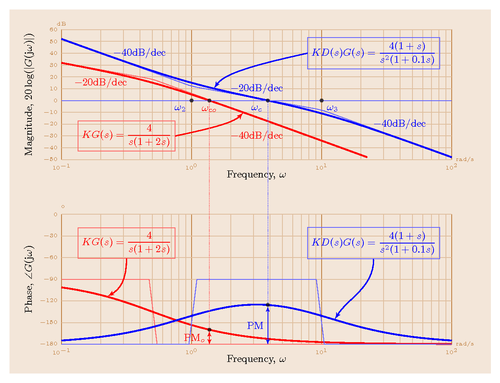This tikz example display two bode plots. It requires the bodegraph package and GNUPLOT.

Edit and compile if you like:
%& -shell-escape% Create a Bode plot using Papanicola Robert's package bodegraph:% http://www.sciences-indus-cpge.apinc.org/Bode-Black-et-Nyquist-avec-Tikz% Author: Dazhi Jiang\documentclass[10pt]{article}\usepackage[active,tightpage]{preview}\PreviewEnvironment{tikzpicture}\setlength\PreviewBorder{5pt}%\usepackage{amsmath,amssymb}\usepackage{tikz}\usepackage{bodegraph}\usetikzlibrary{intersections}\usetikzlibrary{calc}\usetikzlibrary{positioning}\begin{document}% Define the layers to draw the diagram\pgfdeclarelayer{background}\pgfdeclarelayer{foreground}\pgfsetlayers{background,main,foreground}\begin{preview}\begin{tikzpicture}[>=latex',ref lines/.style={thin, blue!60},ref points/.style={circle, black, opacity=0.7, fill, minimum size= 3pt, inner sep=0},every node/.style={font=\small},bode lines/.style={very thick, blue},Gclabel/.style={text=blue},xscale=12/3]\begin{scope}[yscale=4/110]\UnitedB\semilog{-1}{2}{-50}{60}
Click to download: bode-plot.tex • bode-plot.pdf
Open in Overleaf: bode-plot.tex

